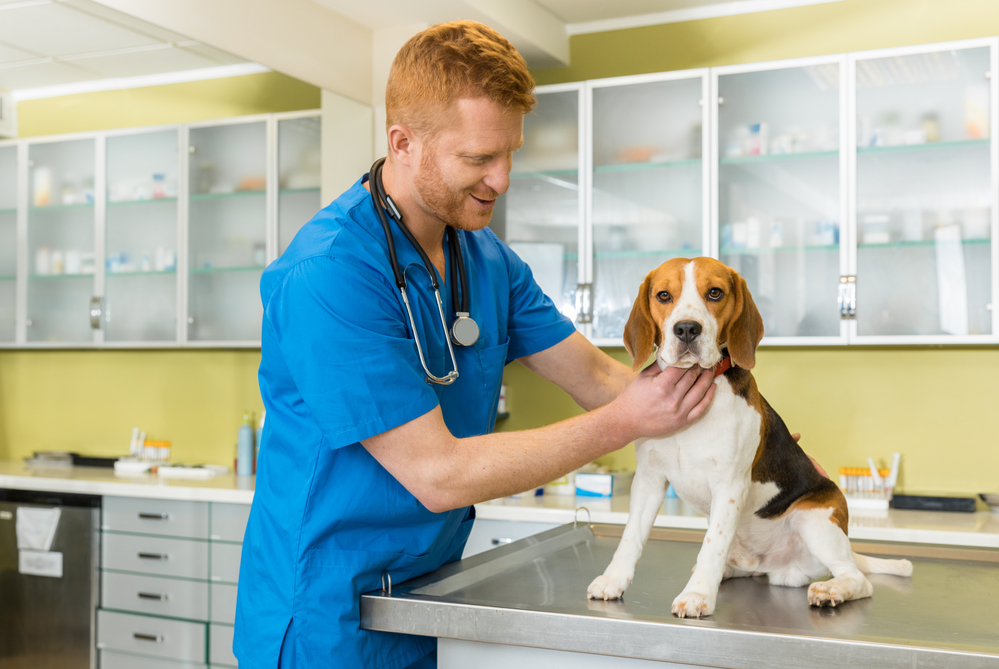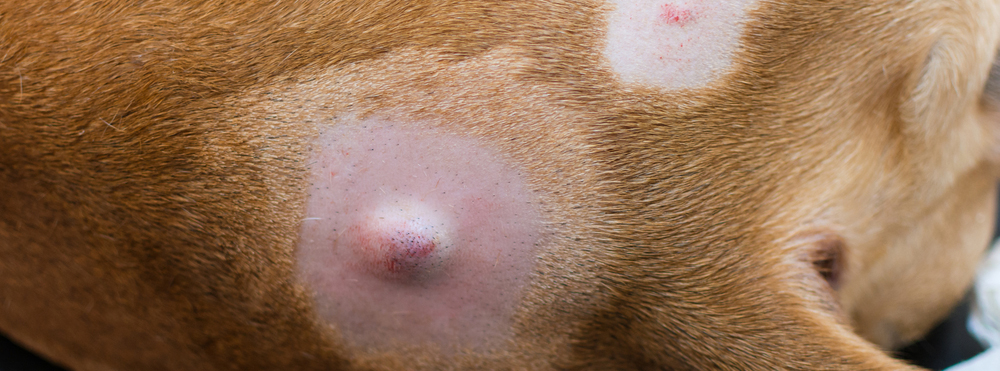
It’s always worrying for pet owners to discover lumps and bumps on their dog’s skin. What if your dog has cancer or some other terrible illness? Fortunately, lumps and bumps on your dog’s skin are often simply benign fatty tumors and aren’t anything to worry about. However, some lumps and bumps can be signs of something that you should talk to your vet about. Dog owners should learn how to tell the difference between a normal, benign lump and a lump that indicates a vet call is needed.
What Kinds of Lumps Are There?

Most lumps and bumps that appear on a dog’s skin are benign fatty tumors. But there are also other kinds that can be more dangerous:
- Fatty tumors
- Warts
- Abscesses
- Sebaceous cysts
- Mast cell tumors
Fatty tumors
Fatty tumors start to appear on a dog’s skin typically when they reach middle age. Developing fatty tumors is actually a perfectly normal part of the aging process in dogs. Most often, fatty tumors appear around the ribs, but can show up in other places, too. Larger breeds and dogs that are overweight are more prone to them, but any dog can get fatty tumors.
Warts
Warts on dogs are usually located around the mouth and are usually caused by a virus. Warts usually go away on their own in younger dogs, but a vet may need to surgically remove them in an older dog.
Abscesses
An abscess can occur after a dog has been bitten by an insect, animal, or other type of creature. If a bite gets infected, pus may start to build up under the skin, causing the abscess.
Sebaceous Cysts
A sebaceous cyst occurs when an oil gland is blocked in a dog’s skin. These cysts look like pimples and will eventually burst, releasing a white substance.
Mast Cell Tumor
A mast cell tumor is a type of skin cancer. It’s the most common type of skin cancer in dogs. Boxers, Labradors, beagles, schnauzers, and Boston terriers are the breeds that are more likely to develop mast cell tumors.
When Should You Call the Vet?
When in doubt, call the vet. It’s better to be safe than sorry when it comes to your pets. It can be difficult to tell the difference between a normal fatty tumor and something that’s cancerous. Your vet will ask you some questions about the lump or bump to help determine whether it’s cause for concern.
Did the Lump Appear Suddenly?
Your vet will want to know if the lump or bump was a gradual growth or if it suddenly appeared.
Has the Lump Changed in Appearance?
Just like with humans, if a lump has changed in size or appearance, that may be more cause for concern than if it has remained the same. Look for changes in size, shape, or color.
Where Is the Lump Located
Where the lump or bump is located can help a vet learn what kind of lump it is. If your dog has multiple lumps, keep track of where they all are (or were, if the lumps went away) so that you can let your vet know.
Has Your Dog’s Behavior Changed?
If a lump is just a fatty tumor, chances are good that your dog will be acting normally. If it’s something else, your dog’s behavior may be impacted and your dog will be acting like something is wrong. If your dog normally has a lot of energy but is acting tired, or if your dog’s appetite has changed, that’s something to tell your veterinarian.
When Should You Bring Your Dog to the Vet?
You should take your dog to the vet to have a lump or bump examined in-person if the vet recommends that you do or if the lump is particularly concerning, such as the following:
- There’s an opening in the lump or bump
- The dog is in pain
- The lump or bump is red
- There’s swelling
- There’s pus

